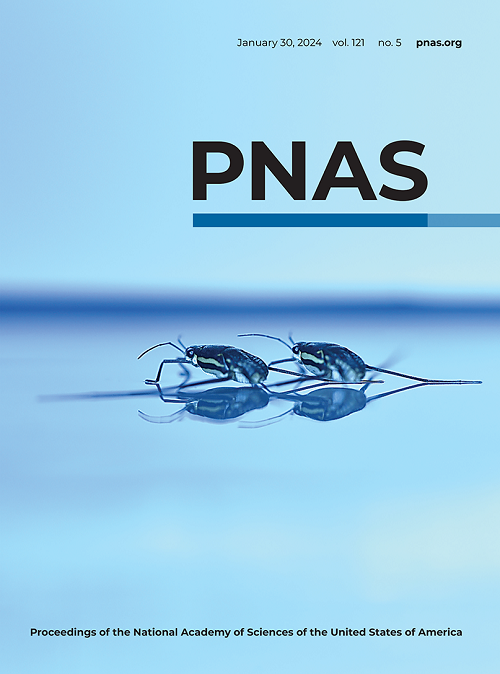Dynamic in situ detection in iRhizo-Chip reveals diurnal fluctuations of Bacillus subtilis in the rhizosphere.
IF 9.4
1区 综合性期刊
Q1 MULTIDISCIPLINARY SCIENCES
Proceedings of the National Academy of Sciences of the United States of America
Pub Date : 2024-09-26
DOI:10.1073/pnas.2408711121
引用次数: 0
Abstract
Effective colonization by microbe in the rhizosphere is critical for establishing a beneficial symbiotic relationship with the host plant. Bacillus subtilis, a soil-dwelling bacterium that is commonly found in association with plants and their rhizosphere, has garnered interest for its potential to enhance plant growth, suppress pathogens, and contribute to sustainable agricultural practices. However, research on the dynamic distribution of B. subtilis within the rhizosphere and its interaction mechanisms with plant roots remains insufficient due to limitations in existing in situ detection methodologies. To achieve dynamic in situ detection of the rhizosphere environment, we established iRhizo-Chip, a microfluidics-based platform. Using this device to investigate microbial behavior within the rhizosphere, we found obvious diurnal fluctuations in the growth of B. subtilis in the rhizosphere. Temporal dynamic analysis of rhizosphere dissolved oxygen (DO), pH, dissolved organic carbon, and reactive oxygen species showed that diurnal fluctuations in the growth of B. subtilis are potentially related to a variety of environmental factors. Spatial dynamic analysis also showed that the spatial distribution changes of B. subtilis and DO and pH were similar. Subsequently, through in vitro control experiments, we proved that rhizosphere DO and pH are the main driving forces for diurnal fluctuations in the growth of B. subtilis. Our results show that the growth of B. subtilis is driven by rhizosphere DO and pH, resulting in diurnal fluctuations, and iRhizo-Chip is a valuable tool for studying plant rhizosphere dynamics.iRhizo 芯片的原位动态检测揭示了根瘤菌中枯草芽孢杆菌的昼夜波动。
微生物在根圈中的有效定殖对于与寄主植物建立有益的共生关系至关重要。枯草芽孢杆菌(Bacillus subtilis)是一种生活在土壤中的细菌,通常与植物及其根瘤菌层结合在一起,因其具有促进植物生长、抑制病原体和促进可持续农业实践的潜力而备受关注。然而,由于现有原位检测方法的局限性,有关枯草芽孢杆菌在根圈中的动态分布及其与植物根系相互作用机制的研究仍然不足。为了实现对根圈环境的原位动态检测,我们建立了一个基于微流控技术的平台--iRhizo-Chip。利用该装置研究根圈中的微生物行为,我们发现根圈中枯草芽孢杆菌的生长有明显的昼夜波动。对根圈溶解氧(DO)、pH值、溶解有机碳和活性氧的时间动态分析表明,枯草芽孢杆菌生长的昼夜波动可能与多种环境因素有关。空间动态分析还表明,枯草芽孢杆菌的空间分布变化与溶解氧和 pH 值的变化相似。随后,通过离体对照实验,我们证明根瘤菌溶解氧和pH值是导致枯草芽孢杆菌生长昼夜波动的主要驱动力。我们的研究结果表明,枯草芽孢杆菌的生长受根圈溶解氧和酸碱度的驱动,从而导致昼夜波动,iRhizo-Chip 是研究植物根圈动力学的重要工具。
本文章由计算机程序翻译,如有差异,请以英文原文为准。
求助全文
约1分钟内获得全文
求助全文
来源期刊
CiteScore
19.00
自引率
0.90%
发文量
3575
审稿时长
2.5 months
期刊介绍:
The Proceedings of the National Academy of Sciences (PNAS), a peer-reviewed journal of the National Academy of Sciences (NAS), serves as an authoritative source for high-impact, original research across the biological, physical, and social sciences. With a global scope, the journal welcomes submissions from researchers worldwide, making it an inclusive platform for advancing scientific knowledge.

 求助内容:
求助内容: 应助结果提醒方式:
应助结果提醒方式:


